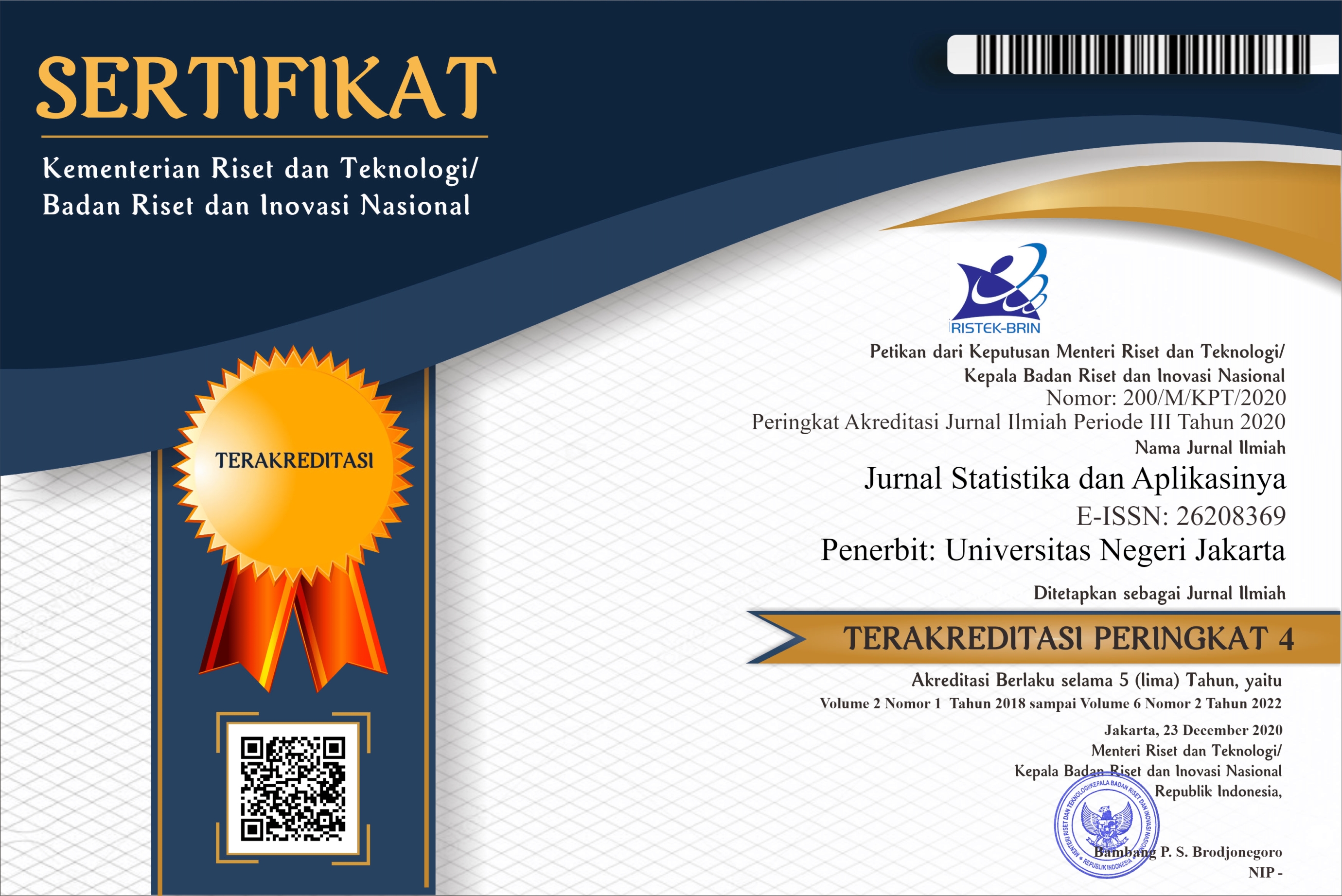Modeling Gross Enrollment Rate for Higher Education in Central Java Province Using Principal Component Geographically Weighted Regression Approach
DOI:
https://doi.org/10.21009/JSA.08104Keywords:
Gross enrollment rate for higher education, Geographically weighted regression, Spatial heterogeneity, Multicollinearity, Principal component analysisAbstract
Education in a country is a crucial factor in enhancing human resources. The Gross Enrollment Rate for Higher Education is one of the important indicators used by the government to evaluate the development of the education sector, particularly higher education. Social and cultural diversity, as well as geographical influences, result in varying conditions across different regions, leading to each region having its own unique characteristics, known as spatial heterogeneity. Geographically Weighted Regression (GWR) is a method that can address the problem of spatial heterogeneity. Additionally, a common issue encountered in modeling with many independent variables is multicollinearity, which can lead to high variance in regression parameter estimates and invalid conclusions. Principal Component Analysis (PCA) is a dimensionality reduction method that can address multicollinearity. The aim of this research is to model Gross Enrollment Rate in Higher Education in Central Java using GWR, preceded by handling multicollinearity with PCA. Furthermore, this study aims to determine the factors influencing Gross Enrollment Rate in Higher Education in Central Java. The results, using a fixed Gaussian kernel weighting function, indicate that modeling with PCA and GWR performs better than using the Ordinary Least Square (OLS) method alone, yielding an AIC value of 169.43 and a coefficient determination value of 96.2%.






